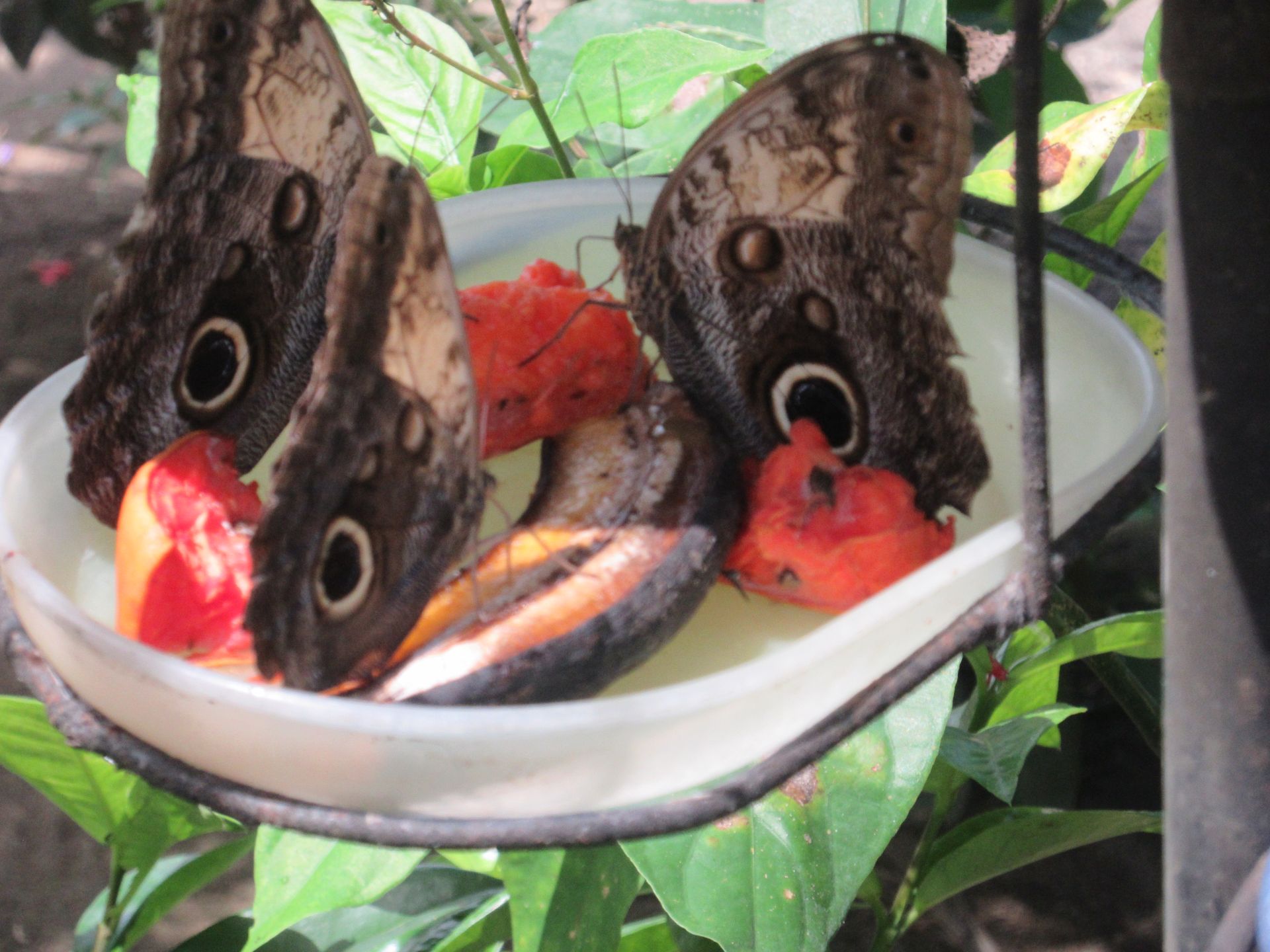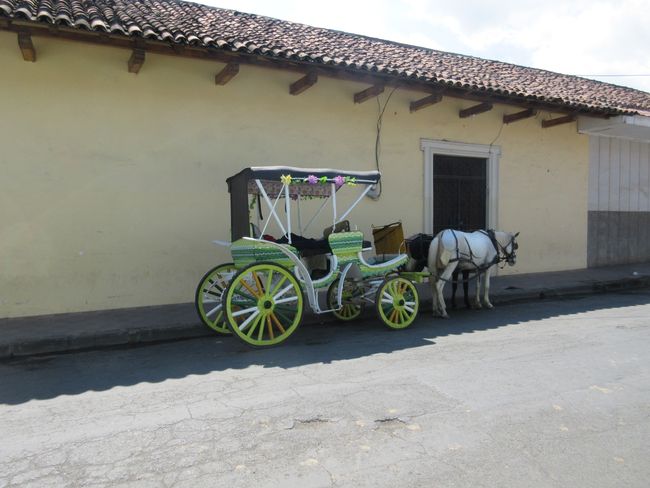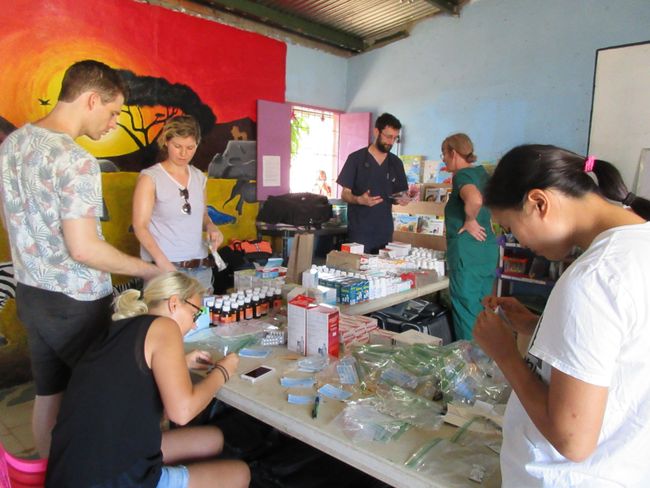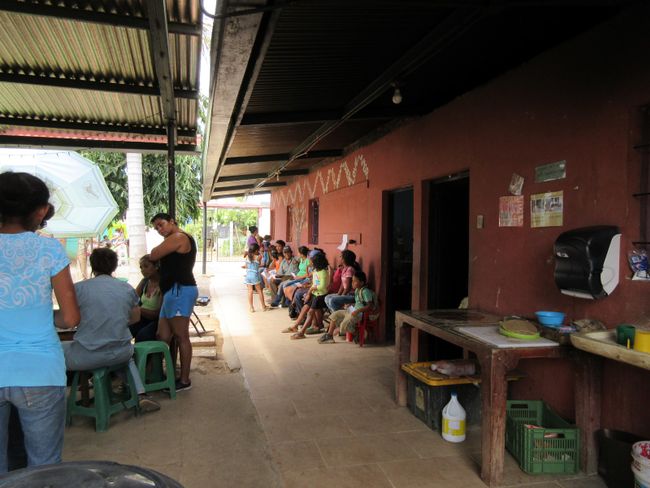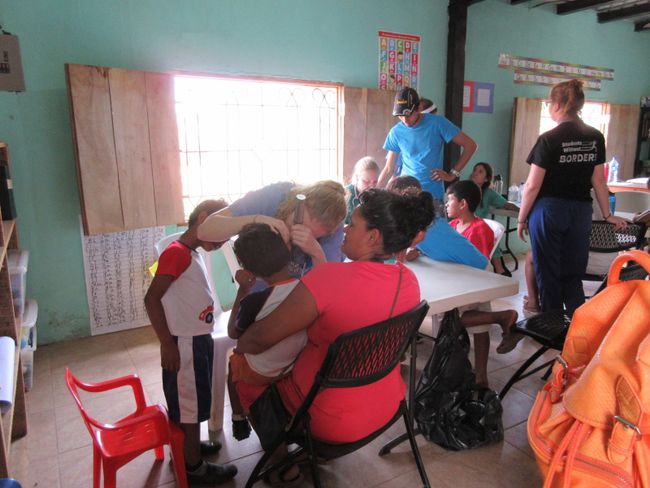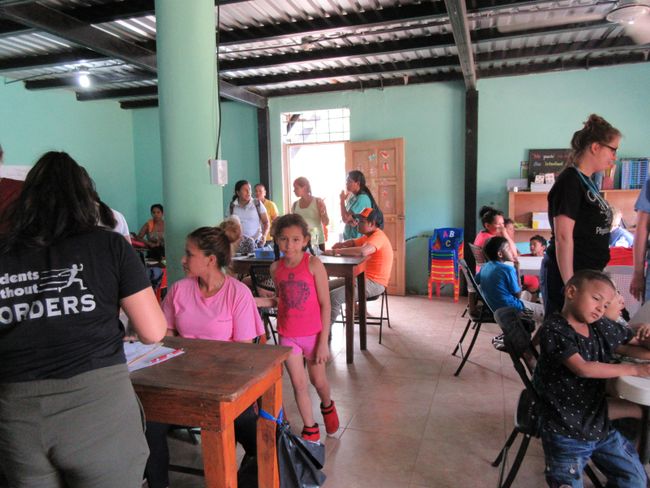Tag 140 - The Medical Brigade
Whakaputaina: 24.03.2018
Ohauru ki te Panui
I didn't expect that many. Keeley had said that there would be about 10 to 15 doctors and medical students. There were at least twice as many, including the interpreters they brought along. They arrived in a chartered chicken bus, carrying numerous boxes of medication, medical instruments, and their lunch to the project. One of them even had a brightly patterned mattress under his arm. The first patients were already sitting patiently in a long row of chairs before their arrival, much more than expected. From grandma to baby, all kinds of family members were present.
Routinely, tables and chairs were set up, and all classrooms were transformed into treatment rooms. Small ziplock bags had to be filled with vitamins, parasites, and other tablets, and labels had to be written and attached. Then it was time for interpreting, which was a big challenge for us. Who knows what rash, bloating, or appendix means in English and Spanish.
Since many cannot read and write well, one can only hope that they have listened well and remembered which tablets are for what and how they should be taken. I have my doubts.
After about 6 hours, it was all over, all patients taken care of, not everyone could be helped on the spot. Some have to go to the so-called health center, where the treatment is free of charge. The problem is that the medication has to be paid for. That's why some don't even go there.
Ohauru ki te Panui
Whakautu
